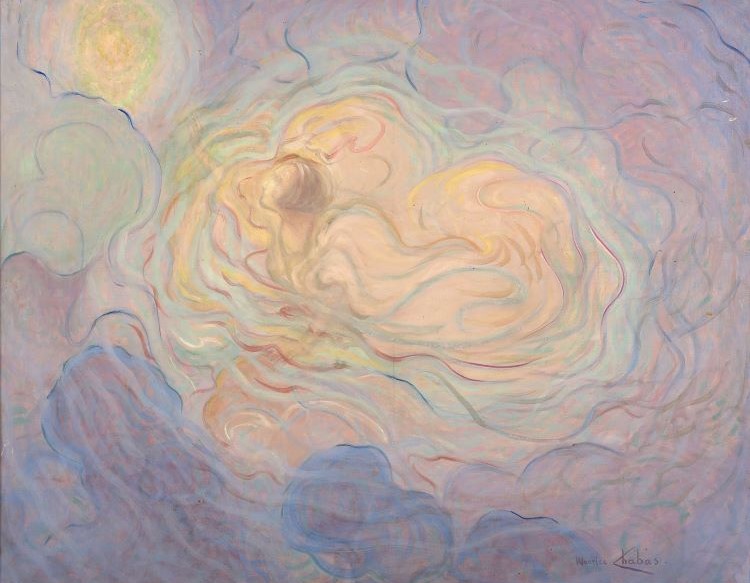Consciousness, defined as first-person experience, is evident to each of us, but it is one of the most complex phenomena to study for scientific research. Subjective conscious experience, which includes what we perceive, our thoughts, and emotions, constitutes the essence of our existence. However, this subjective nature makes it difficult to approach with the reductionist and quantitative methods typical of scientific inquiry. From a neuroscientific perspective, consciousness is often described as the result of coordinated brain activity across different areas, emerging from the integration of this activity, especially in the analysis of emotions, attention, and sensory information. The synchronous activity of neural networks, manifested through brain waves of different frequencies, is considered crucial for the expression and maintenance of the state of consciousness. However, the problem of characterizing the subjectivity of consciousness remains fundamentally unresolved from an experimental standpoint (Chalmers, 1999).
Research reveals an even more complex picture when we consider consciousness as a dynamic process that varies based on different mental and global physiological states over the course of 24 hours. This perspective frames consciousness not only as the sum of ordinary waking state experiences but also includes non-ordinary states of consciousness, such as those experienced during various forms of meditation, hypnotic trance, the intake of psychotropic substances, and experiences during sleep (for a general overview of these states, see De Pisapia 2024). Regarding the latter, it is easy to refute the claim, often made even by neuroscientists, that during the night consciousness seems to shut down. Just set an alarm for any time during the night and, upon waking, try to immediately recall the experiences lived just before while you were asleep. Dreams, complex thoughts, images, sounds, positive or negative emotions, depending on the phase of sleep in which we wake up, are conscious experiences we continuously go through during the night. However, in the morning, when we enter a more ordinary state of consciousness, based more on logical reasoning and interaction with other people, we often lose memory of these experiences during sleep.
Brain activity undergoes various transformations through the stages of sleep, which is a process composed of distinct stages, particularly the REM (Rapid Eye Movement) phase, characterized by rapid eye movements under closed eyelids, and the non-REM (NREM) phase, where eye movements are absent. The NREM phases are further divided into three stages: N1, N2, and N3. The N1 stage is a transition period from wakefulness to sleep, where there is a reduction in muscle activity and theta waves appear, with frequencies between 4 and 7 Hz. It is a brief and light period, where consciousness begins to fade. The N2 stage is characterized by the presence of sleep spindles and K-complexes, episodes of specific and brief brain activity. Sleep spindles are brief bursts of waves at frequencies between 12 and 16 Hz, while K-complexes are isolated high-amplitude spikes. This stage helps maintain sleep and process sensory information, constituting about 50% of the total sleep cycle. The N3 stage, also known as slow-wave sleep or deep sleep, is the most restorative sleep. During this phase, brain activity significantly slows down, with delta waves predominating, at frequencies between 0.5 and 4 Hz. In this stage, the body reaches its maximum level of physical recovery, repairs and regenerates, and the immune system strengthens. This stage is also crucial for memory consolidation.
The REM phase, finally, is characterized by brain waves that resemble those of the waking state, including beta frequencies between 15 and 30 Hz and gamma frequencies above 30 Hz. During this phase, the most vivid and structured dreams occur. Brain activity during the REM phase includes an increase in activity in limbic regions, involved in emotion processing, and a reduction in activity in the dorsolateral prefrontal cortex, associated with executive control and rationality.
What happens to consciousness during these sleep stages, and what kind of experiences do we have corresponding to these different modes of brain function (Nir and Tononi 2010)? The process of falling asleep begins with hypnagogic images, vivid and fragmentary visions that appear as we transition from wakefulness to sleep, sometimes accompanied by sounds and voices. These fragmented perceptions accompany the initial phase of transition between waking consciousness and deep sleep, emerging in correspondence with progressive functional disconnections between the brain areas responsible for waking perception. Often described as vivid visual perceptions without a coherent narrative structure, these images can be influenced by recent waking experiences.
The REM phase is the period of sleep where experiences become more structured and narrative. REM dreams can be bizarre, include intense emotional experiences, and complex scenarios, sometimes reflecting the processes of memory consolidation of events experienced during the day or the processing of emotions. During the REM phase, there is an increase in activity in brain regions such as the limbic system, involved in emotion processing, and a reduction in activity in the dorsolateral prefrontal cortex, associated with executive control and rationality. This explains why REM dreams can be emotionally intense and often illogical.
Analysis of functional connectivity during sleep has revealed that neural networks dynamically reorganize between different phases. During NREM sleep, the default mode network, involved in internal reflection and autobiographical memory, shows a reduction in internal connectivity, meaning its areas begin to disconnect from each other. In contrast, during REM sleep, there is an increase in connectivity between limbic and cortical networks, suggesting more intense emotional and mnemonic processing.
A phenomenon of great scientific interest and personal value for those who experience it directly is lucid dreaming, which usually occurs during the REM phases (De Pisapia 2021; Tormen 2024). In this state, the dreamer becomes aware that they are dreaming and can influence the content of the dream. About 55% of people have experienced a lucid dream at least once in their lives, although repeated episodes are less common. Studies like those conducted by Ursula Voss et al. (2009) have explored various methods to increase the frequency of lucid dreams. The MILD (Mnemonic Induction of Lucid Dreams) technique involves repeating to oneself the intention to recognize that one is dreaming before falling asleep, based on prospective memory, that is, the ability to remember to do something in the future. Brain stimulation uses devices that emit lights or sounds during REM sleep to help the dreamer recognize the dream state. Another technique for inducing lucid dreams is reality testing, which involves repeatedly checking during the day whether one is awake or dreaming, hoping that this behavior transfers into the dream.
Lucid dreams have been the subject of some neuroscientific studies. Neuroimaging techniques, such as functional magnetic resonance imaging (fMRI), have begun to reveal that during lucid dreams, brain regions like the dorsolateral prefrontal cortex, usually less active during REM sleep, show increased activity, suggesting greater awareness and cognitive control, as well as an ability to maintain future memory and intentionality. Other studies have used electroencephalography (EEG) to show that lucid dreams are associated with increased activity in gamma waves. Lucid dreams not only show activation of prefrontal areas but also involve other brain regions. For example, the anterior cingulate cortex, involved in emotion control, and the amygdala, which manages emotional responses, are active during lucid dreams. This combination of activity suggests that lucid dreams involve a complex interaction between awareness, cognitive control, and emotional management. The parietal cortex, which contributes to spatial awareness and body perception, is also activated during lucid dreams, probably in correlation with the lucid dreamers' reported experience of being able to manipulate the dream environment and experience vivid physical sensations. Increased gamma wave activity seems to suggest a higher level of attention and awareness during lucid dreams compared to ordinary ones.
What happens instead during the NREM phases of sleep? One type of experience reported during these phases is the so-called white dream, in which a person feels they have dreamed but cannot remember any specific details. Although there was dream activity, the dream content is not accessible upon waking. This phenomenon is particularly common during N2 and N3 stages, characterized by slow and synchronized brain activity. These dreams might be the result of a modified state of consciousness where, due to the physiological peculiarities of NREM sleep, including the significant reduction of almost all neurotransmitters (except for GABA, which increases compared to wakefulness), the brain cannot encode and store dream information. The neurotransmitter configuration thus suggests a reduced state of consciousness, a minimal form of subjective experience, distinct from the complete absence of consciousness. This type of consciousness can be compared to an advanced type of meditation where the individual is aware but not engaged in specific thoughts or images, as reported by numerous expert meditators, mystics, or thinkers. For example, the Indian philosopher Jiddu Krishnamurti often spoke of states of consciousness he called the attentive sleepful state, where the individual is present but not involved in specific thoughts or images. He described this state as a form of pure awareness, where the mind is not occupied by defined cognitive or sensory processes. This type of experience, according to Krishnamurti, is a natural and effortless condition of being, where the individual simply exists without the interference of the analytical mind.
A philosophical question of great relevance when considering alternative states of consciousness to those of wakefulness, such as those associated with sleep, concerns the nature of reality experienced during these forms of consciousness. The sense of reality in these states is high, and it is only upon waking that we begin to question or discredit it. For example, during a dream, the dream reality appears extremely convincing, and even in a lucid dream, where we are aware that it is a dream, the perceived reality maintains its concreteness, and we are completely immersed in it. This perspective leads us to consider reality as multifaceted and consciousness as a continuum rather than a binary phenomenon. Altered states of consciousness directly and experientially demonstrate that our perception of reality is modulated by underlying neural conditions.
Can reality thus be seen as a flexible neural construction that varies significantly based on the state of consciousness? If so, can we use these altered states of consciousness to overcome negative blocks or distortions that ordinary reality may present to an individual, for example, suffering from depression or trauma? Research indicates that some altered states of consciousness can have significant therapeutic applications. For example, lucid dreams can be used to treat recurring nightmares and post-traumatic disorders. The ability to control dreams can help people confront fears and traumas in a safe and controlled environment.
The altered states of consciousness during sleep constitute a rich area of research, both personal and scientific, challenging traditional conceptions of the mind, at least according to Western culture. Some of these studies suggest that spontaneous non-ordinary states of consciousness that occur during sleep may be of great importance for our mental well-being. By exploring phenomena such as hypnagogic images, white dreams, lucid dreams, and contentless night consciousness, we might open ourselves to a more complete and integrated view of human consciousness.
Bibliographical references
Chalmers, D. J. (1996). La mente cosciente. McGraw-Hill.
De Pisapia, N. (2021). Il sogno lucido: Dalla fenomenologia alla ricerca neurobiologica. Giornale italiano di psicologia, 48(1), 187-218.
De Pisapia, N. (2024). La coscienza. Il Mulino.
Nir, Y., & Tononi, G. (2010). Dreaming and the brain: From phenomenology to neurophysiology. Trends in Cognitive Sciences, 14(2), 88-100.
Siclari, F., LaRocque, J. J., Bernardi, G., Postle, B. R., & Tononi, G. (2014). The neural correlates of dreaming. Nature Neuroscience, 17(11), 1524-1531.
Tormen, F. (2024). Con gli occhi aperti. Il Saggiatore.
Voss, U., Holzmann, R., Tuin, I., & Hobson, J. A. (2009). Lucid dreaming: A state of consciousness with features of both waking and non-lucid dreaming. Sleep, 32(9), 1191-1200.



